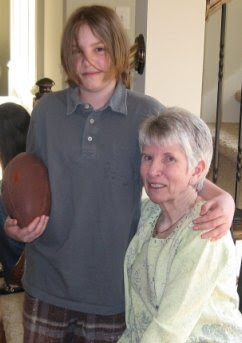
By ALEXANDER G. HIGGINS, Associated Press Writer

GENEVA – Scientists moved Saturday to prepare the world's largest atom smasher for exploring the depths of matter after successfully restarting the $10 billion machine following more than a year of repairs.
The nuclear physicists working on the Large Hadron Collider were surprised that they could so quickly get beams of protons whizzing near the speed of light during the restart late Friday, said James Gillies, spokesman for the European Organization for Nuclear Research.
The machine was heavily damaged by a simple electrical fault in September last year.
Some scientists had gone home early Friday and had to be called back as the project jumped ahead, Gillies said.
At a meeting early Saturday "they basically had to tear up the first few pages of their PowerPoint presentation which had outlined the procedures that they were planning to follow," he said. "That was all wrapped up by midnight. They are going through the paces really very fast."
The European Organization for Nuclear Research has taken the restart of the collider step by step to avoid further setbacks as it moves toward new scientific experiments — probably starting in January — regarding the makeup of matter and the universe.
CERN, as it is known, had hoped by 7 a.m. (0600 GMT) Saturday to get the beams to travel the 27-kilometer (17-mile) circular tunnel under the Swiss-French border, but things went so well Friday evening that they had achieved the operation seven hours earlier.
Praise from scientists around the world was quick. "First beam through the Atlas!" whooped an Internet message from Adam Yurkewicz, an American scientist working on the massive Atlas detector on the machine.
"I congratulate the scientists and engineers that have worked to get the LHC back up and running," said Dennis Kovar of the U.S. Department of Energy, which participates in the project.
He called the machine "unprecedented in size, in complexity, and in the scope of the international collaboration that has built it over the last 15 years."
Later Saturday the organizers decided to test all the protection equipment while there still is a very low intensity proton beam circulating in the collider at 11,000 times a second. The tests will take 10 days, Gillies said.
The current beam has relatively few protons to avoid damage to the LHC should control of them be lost.
Gillies said CERN decided against immediately testing the LHC's ability to speed up the beams to higher energy or to start with low-energy collisions that would help scientist calibrate their detection equipment.
In the meantime CERN is using about 2,000 superconducting magnets — some of them 15 meters (50 feet) long — to improve control of the beams of billions of protons so they will remain tightly bunched and stay clear of sensitive equipment.
Gillies said the scientists are being very conservative.
"They're leaving a lot of time so that the guys who are operating the machine are under no pressure whatsoever to tick off the boxes and move forward," he said.
Officials said Friday evening's progress was an important step on the road toward scientific discoveries at the LHC, which are expected in 2010.
"We've still got some way to go before physics can begin, but with this milestone we're well on the way," CERN Director General Rolf Heuer said.
With great fanfare, CERN circulated its first beams Sept. 10, 2008. But the machine was sidetracked nine days later when a badly soldered electrical splice overheated and set off a chain of damage to the magnets and other parts of the collider.
Steve Myers, CERN's director for accelerators, said the improvements since then have made the LHC a far better understood machine than it was a year ago.
The LHC is expected soon to be running with more energy the world's current most powerful accelerator, the Tevatron at Fermilab near Chicago. It is supposed to keep ramping up to seven times the energy of Fermilab in coming years.
This will allow the collisions between protons to give insights into dark matter and what gives mass to other particles, and to show what matter was in the microseconds of rapid cooling after the Big Bang that many scientists theorize marked the creation of the universe billions of years ago.
When the machine is fully operational, the magnets will control the beams of protons and send them in opposite directions through two parallel tubes the size of fire hoses. In rooms as large as cathedrals 300 feet (100 meters) below the ground the magnets will force them into huge detectors to record what happens.
The LHC operates at nearly absolute zero temperature, colder than outer space, which allows the superconducting magnets to guide the protons most efficiently.
Physicists have used smaller, room-temperature colliders for decades to study the atom. They once thought protons and neutrons were the smallest components of the atom's nucleus, but the colliders showed that they are made of quarks and gluons and that there are other forces and particles. And scientists still have other questions about antimatter, dark matter and supersymmetry they want to answer with CERN's new collider.
The Superconducting Super Collider being built in Texas would have been bigger than the LHC, but in 1993 the U.S. Congress canceled it after costs soared and questions were raised about its scientific value.
Gillies said the LHC should be ramped up to 3.5 trillion electron volts some time next year, which will be 3 1/2 times as powerful as Fermilab. The two laboratories are friendly rivals, working on equipment and sharing scientists.
But each would be delighted to make the discovery of the elusive Higgs boson, the particle or field that theoretically gives mass to other particles. That is widely expected to deserve the Nobel Prize for physics.
More than 8,000 physicists from other labs around the world also have work planned for the LHC. The organization is run by its 20 European member nations, with support from other countries, including observers Japan, India, Russia and the U.S. that have made big contributions.
AP – FILE - In this Sept. 10, 2008 file photo, a European Center for Nuclear Research (CERN) scientist controls …





















No comments:
Post a Comment
Please feel free to leave a comment!
Comments will be reviewed and have the opportunity for posting.
Thank you for your thoughts!!